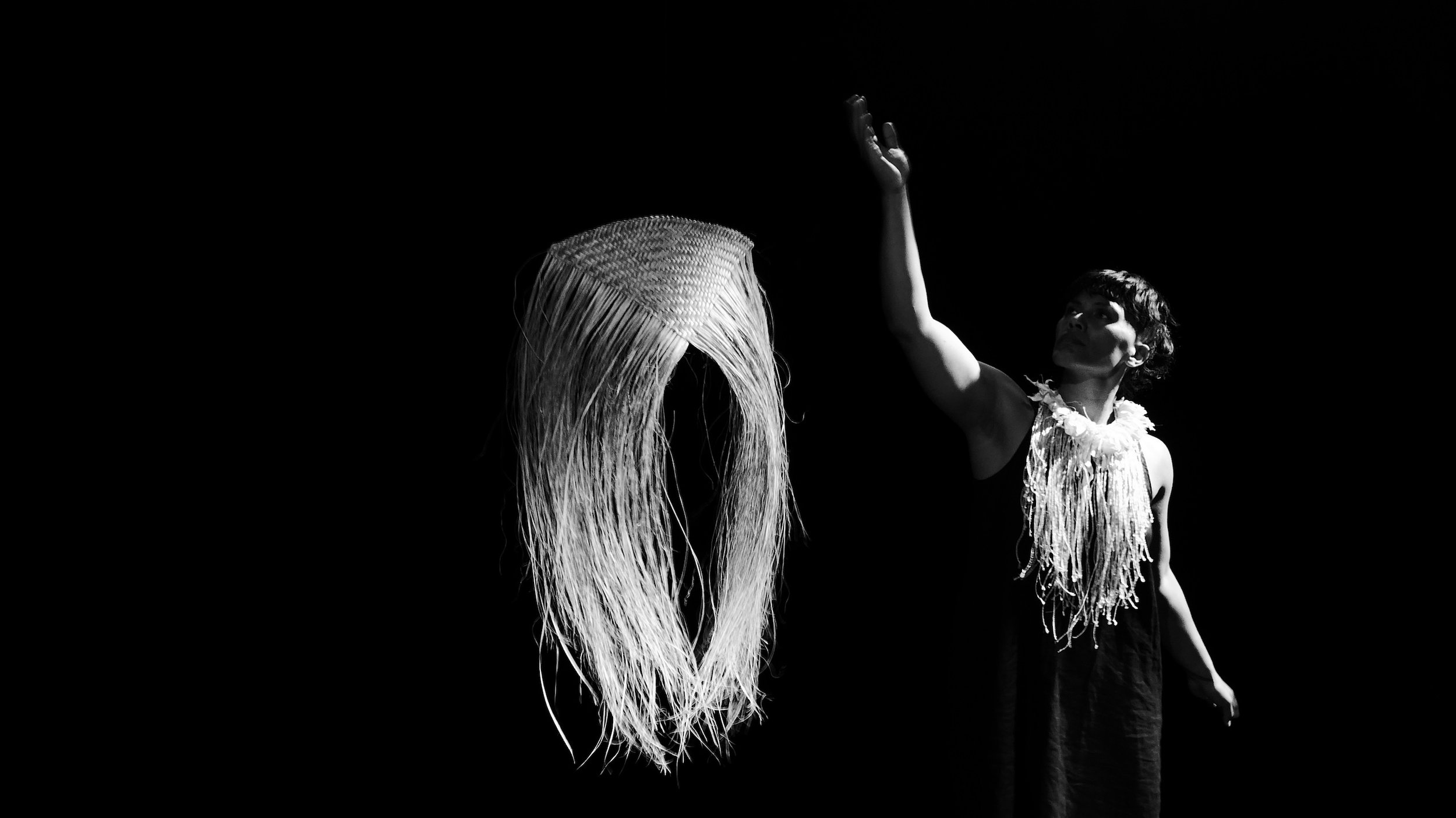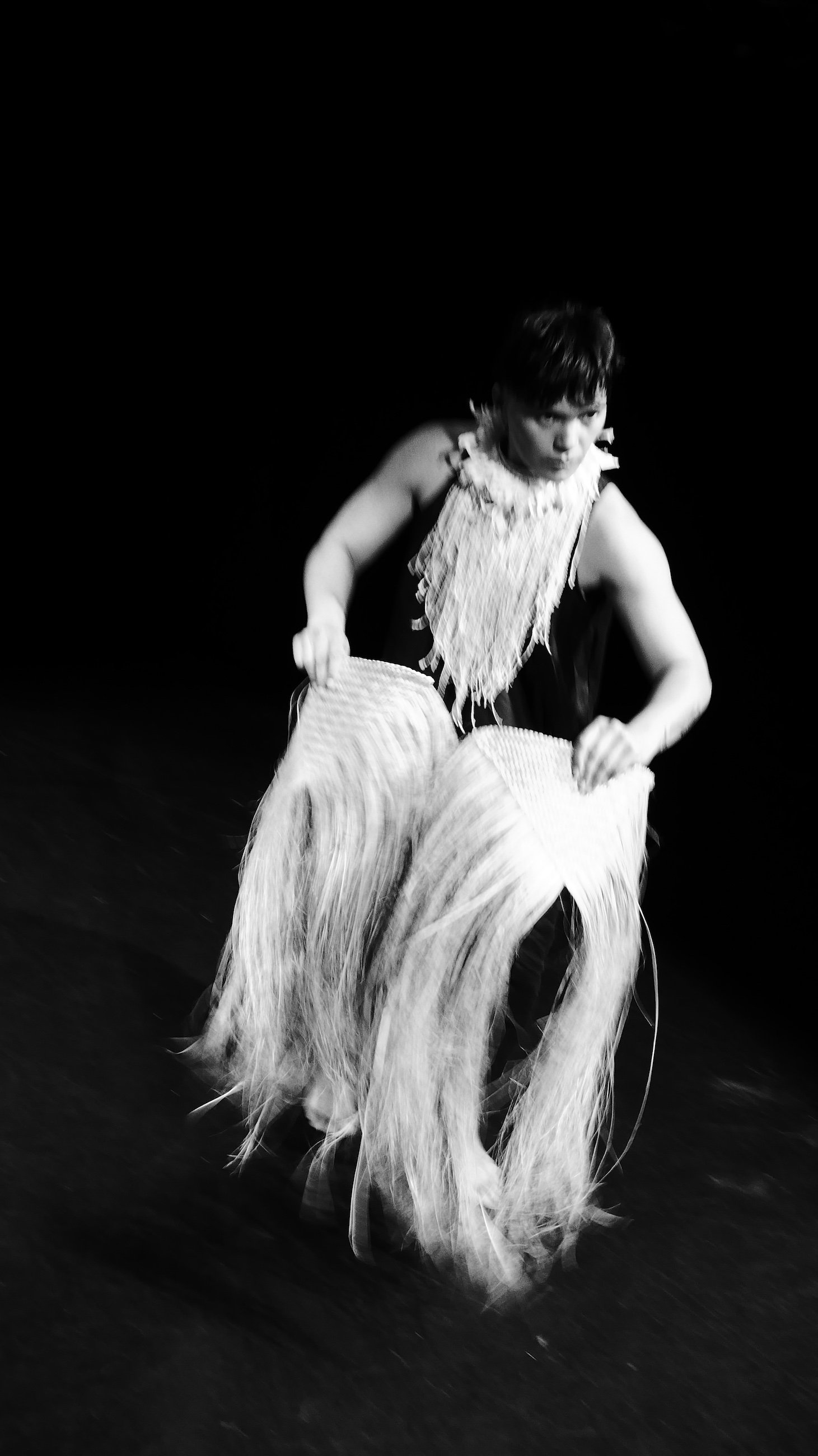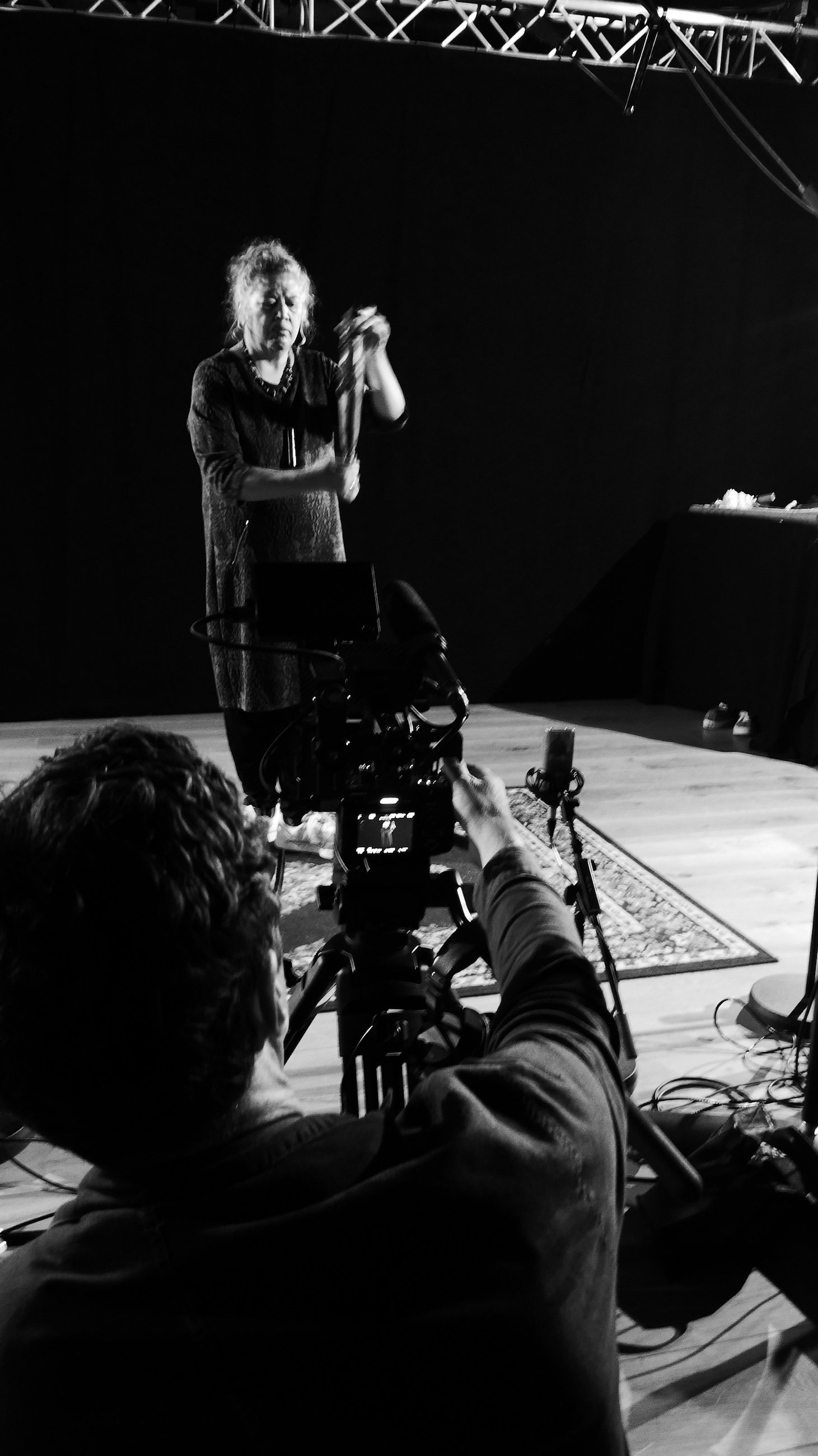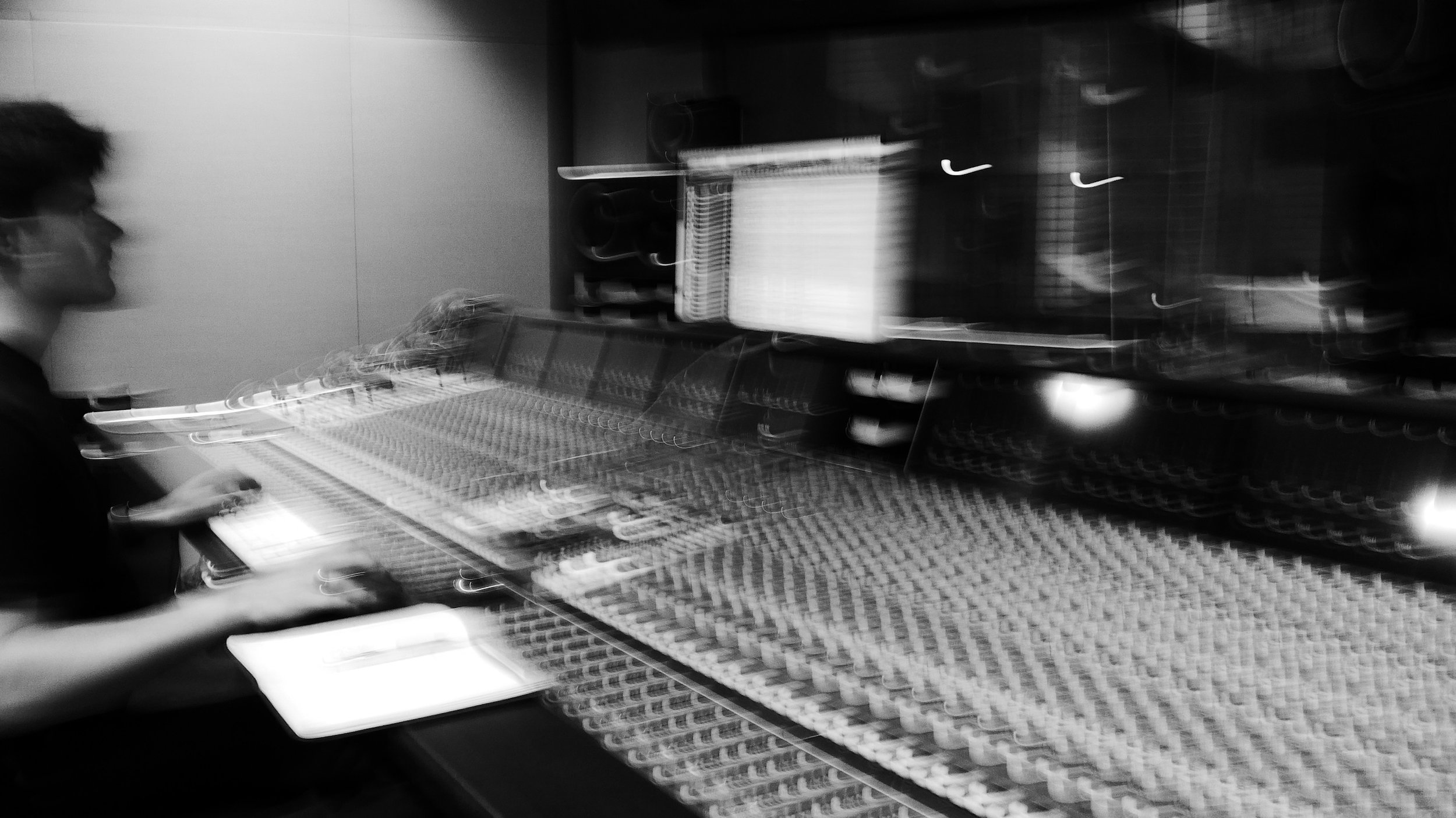PEPE
Renowned artists collaborate for this project to create a cultural time-capsule, focussing on the musicianship and beauty of Taonga Pūoro in dialogue with contemporary dance (kanikani), raranga (weaving) and digital arts. Kāi Tahu wāhine musician-composers, Te Tumu Toi Arts Laureate Ariana Tikao, Dr Ruby Solly and Mahina-Ina Kingi-Kaui are supported by Alistair Fraser and New Zealand Arts Icon, Dame Gillian Karawe Whitehead (Ngāi Te Rangi). The celebrated dance artistry of Nancy Wijohn (Te Rarawa, Ngāi Tūhoe, Ngāti Tahu, Ngāti Whaoa), supported by Kelly Nash (Ngāpuhi, Ngāi Te Rangi, Ngāti Pakeha), resonates with traditional Māori musical instruments through gesture, song, breath and pulse. Wijohn is adorned by the craft prowess of Kahu Collective - she incorporates in her channelled choreography a series of raranga pieces from Lisa Harding, Corabelle Summerton and Cathy Payne. The digital realm is where these distinctive artform voices coalesce, as cine-poems and story fragments. Our design kaupapa respectfully draws on Mātauranga Māori shared by this inspirational rōpū of wāhine toa.
Hineraukatauri, atua of traditional musical instruments, is the kaitiaki of all flutes or kōauau from the Taonga Pūoro family. The motif of the Pepe (Case Moth), is evoked as Taonga Pūoro combines with complementary practices in dance, craft and digital media. Ngā mihi nui to all collaborators involved in this project, including Stuart Foster, Jac Grenfell, Justin Cederholm, Bradon McCaughey, and film director Te Tumu Toi Arts Laureate Daniel Belton with Creative Producer Donnine Harrison. Thanks and acknowledgements to Massey University whānau for your amazing support. The PEPE project is produced with Regeneration Funding from Manatū Taonga Ministry For Culture & Heritage. In March 2025, PEPE was paired with Pōtaka Nautilus as a live performance event for Dunedin Arts Festival - featuring taonga pūoro master artists Ariana Tikao, Mahina Kingi-Kaui, Alistair Fraser and Dr Ruby Solly onstage activating large format live keyed film projections at the Glenroy Auditorium. Mā te whiritahi, ka whakatutuki ai ngā pūmanawa ā tāngata.
Notes on Film
“Congruent with our project kaupapa is the notion of tapered and woven space. When we think of time being tapered, this suggests acceleration. If we consider the tapering of space, this implies compression. As in the act of breathing, expansion and contraction transmit pulse. The Pūtōrino instrument shape (unique to Aotearoa), is physically tapered at both ends and resembles the exquisite form of the Case Moth cocoon. The webbing of silk fibres, spun by the larvae of the moth also carry inspiration for our digital taiao environment design - corridors of luminescent fibres define porous, temporal stages for the dancer to traverse. As sonic visualisations these topographies depict pressurised and released spaces, like oxygenated lungs breathing. The movement of air as inhalation and exhalation relates equally to dancer and musician. PEPE’s bespoke world broadcasts a poetic matrix of filmed kanikani, intertwined digitally to taonga pūoro in cinema.
The wisdom of the natural world radiates interconnectedness - all that is seeded in the expansive rhythm of Te Ao Māori (the cosmos seen as the defining principle is whānaungatanga, kinship, where all elements of creation within the living and spiritual realms are interrelated). Wide space is deep sound, lower frequency. Narrow space is higher sound, higher pitch. Sound moves us. In taonga pūoro flute calls we hear the bending of pitch, the play of scale and tonality - we feel the texture and vibration of sound as emotionally palpable, charged with life force. Delicate melodies are contrasted with the fullness of directly blown breathy intonements. The frequencies of taonga pūoro transmute the dance, and this relationship is reciprocal.
In this dance-film we are acquainted with a mysterious traveller who signifies both the male and female aspects of Hineraukatauri. She/he must move through the complexities of time and space to bridge evolutionary layers and further realise the power of their true self. They appear strong and sometimes fierce, for it takes a determined effort to find one’s way into the interior of truth and self-knowledge. This is an intimate film work that offers a deeply reflective meditation, honouring the enigma of Hineraukatauri. The dancer navigates dimensional thresholds through a network of motioned mycelium-like spaces. From what might be the mouth of an ancient cave, or a birth canal, she/he asserts a potent projection of hope to the future. In the fiercely sweet terrain of their soul, they reposition themselves to embody the essence of the moth across a new wātea of consciousness. These dance episodes are journeys of metamorphosis, songs of becoming, cocooned by and woven together with the profound aroha of ngā taonga pūoro” Daniel Belton and Good Company Arts


































